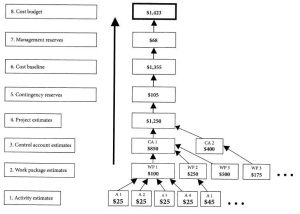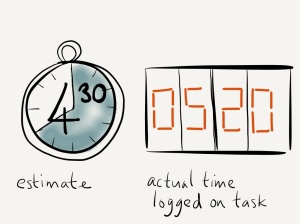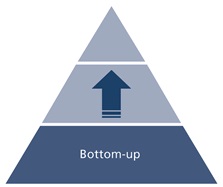A business case is a starting of project, documented, that is intended to convince a decision maker to approve some kind of action. We would like to share a sample for all of you.
Notes: This sample is for reference only and it’s not a real case.

A business case is a starting of project, documented, that is intended to convince a decision maker to approve some kind of action. We would like to share a sample for all of you.
Notes: This sample is for reference only and it’s not a real case.
Product, Project, and System Development Lifecycle Relationships
Do you know the relationships between Product, Project, and System Development Life Cycle Relationships? If you don’t know then you can click the link which will give you clear explaination.
 Did you find that you have not enough time to finish your day-to-day work? Did you feel your work stresses you unbreathable? If the answer is YES, then you should learn to manage your time effectively. If you can more effectively manage your daily workload, you will be able to increase your productivity whilst also ensuring you are able to maintain a healthy work-life balance.
Did you find that you have not enough time to finish your day-to-day work? Did you feel your work stresses you unbreathable? If the answer is YES, then you should learn to manage your time effectively. If you can more effectively manage your daily workload, you will be able to increase your productivity whilst also ensuring you are able to maintain a healthy work-life balance.
I think you should always be prepared to accept new tasks from your boss(es) or created for you to deal with by your junior colleagues. There are many tasks for you to handle. Terrible! First of all you should be prioritizing the tasks you are asked to fulfill, and knowing when one of them can wait until another time. There are some techniques for you to turn down extra work without upsetting or offending anyone. Don’t just say, ‘I’m too busy!’ That’s not going to create a good impression. Unfortunately, your manager will probably still try to pressurize you into taking it on. You should instead explain and justify why you ‘have’ to say no. Don’t be apologetic about it. Don’t make it sound like you’re making excuses.
Here are few examples to help you turn down extra works:
1. Because of my other commitments, I think I’m probably not the best person for this particular task right now. I’d suggest….’
2. I’m afraid this would inevitably have to wait quite a while due to other more pressing priorities.
3. Unfortunately, accepting this would mean that the project I’m currently working on becomes delayed.
Unfortunately, in real world if you have multiple bosses who can assigned jobs to you and your peers senior than you will also would like you to help them to deal with something you are the expect and you are busy enough in 24 hours a day. Then, you are in the worst situation. Hopefully, you can delegate some of works to someone else. It’s the only way.
Delegation is the best to share some tasks and save time for you to deal with unexpected tasks. However, you have to justify will you spend more time explaining how to carry out the task than it would have taken you to complete it yourself. Small one-off tasks are typically best done yourself but lengthier tasks – or tasks which are likely to need to be respected in the future – are often best delegated. So, you should set up your effective delegation strategy.
Do your boss or who assign tasks to you said that “I know you are busy but you can ‘multi-task’ to help me to do the tasks.” I am sorry tell you that you can’t because you are not a computer, you just be human and you can’t perform multi-tasking. Trust me you can’t. Lack of attention given to any one particular task resulting in error happen and consume more time to fix the error.
I suggested you to try below two tools for your time management.
1. To-do list – prioritize your tasks to know which task should be ‘High priority’, ‘Low priority’ and ‘Very low priority’ you should do firstly.
2. Activity list – it details what you have actually achieved during the day. It is almost like keeping a diary for everything you do, and when you do it for you to analysis ‘YOU’.
 Do you find yourself asking for more time whenever you work on a project? Do you ever get the extra time you asked for? Do you know how much time lost in inefficiencies works within project team? Do you know that project resources were unproductive due to poor document management practices, inefficient project communication standards, and ineffective project collaboration tools. Recently, I read an article which said that the time lost is more than one-third of the project!
Do you find yourself asking for more time whenever you work on a project? Do you ever get the extra time you asked for? Do you know how much time lost in inefficiencies works within project team? Do you know that project resources were unproductive due to poor document management practices, inefficient project communication standards, and ineffective project collaboration tools. Recently, I read an article which said that the time lost is more than one-third of the project!
Can we solve this problem? YES. You should have some tools for managing project. The answer is PMIS. As defined by PMI, Project Management Information System (PMIS) is a standard set of automated project management tools available within an organization and integrated into a system. PMI does not specify which tools or technologies to use as a PMIS.
Here is a list of essential PMIS capabilities:
– Supports the generation of a project charter, schedule, and budget
– Facilitates communication and feedback
– Monitors project activities
– Controls project changes
– Analyzes and forecasts project performance
– Disseminates project status to relevant stakeholders
– Provides real-time information essential for initiating, planning, executing, controlling, and closing a project
I would like to recommend a book named SharePoint 2010 for Project Management written by Dux Raymond Sy. This book introduces how to manage your projects with SharePoint. SharePoint allows individuals in an organization to easily create and manage their own collaborative solution. So, it can be customized as PMIS. This book information also refers to this book.
Through this book you can define the essential PMIS components in SharePoint and help you manage the project management processes.
– Project Calendar – stores common project events such as meetings, deadlines, and resource availability
– Project Tasks – stores project task information, assignments, and status
– Project Risks – stores project risk information, priority, and status
– Project Contacts – stores common project contacts
– Project Resources – stores project resource information, skill sets, and rates
– Project Documents – stores relevant project documents, templates, checklists, and reports
– Change request system – stores change request information, decisions, and actions
– Project Announcements – stores relevant project announcements
– Project Milestones – stores project milestone information with baseline dates and actual dates
Through the established the PMIS, you could find the most valuable functions and benefit to your project.
– Support Team Collaboration
– Project Tracking
– Project Reporting
In conclusion, if you have below signs that you need to begin using PMIS
– No standardized system for integrating project goals
– Inefficient document management
– Lack of appropriate tools to facilitate team collaboration
– Inability to report accurate and timely status of the project
– Not achieving organizational strategic goals
 “Congratulations! You are promotion.” said your boss. You are happy because you got promotion from systems analyst to project manager. After the exciting you feel some fears and questions, what difference between systems analyst and project manager? What’s the duty and accountable of project manager?
“Congratulations! You are promotion.” said your boss. You are happy because you got promotion from systems analyst to project manager. After the exciting you feel some fears and questions, what difference between systems analyst and project manager? What’s the duty and accountable of project manager?
If you are in small-to-mid size company or your projects usually be small-to-mid size and your team size are not greater than 2 people, you will not feel the different and you may do the same things as usual. So, I assumed that you are not working in such type of company or projects.
Do you know the difference of the job description between the systems analyst and project manager? For, systems analyst generally you are middleman among users and developers, assessing the needs of the end-user and translating them into programming or turning over the programming responsibility to the development project team. You will be focus on technical aspects, collecting and analysis the requirements, define scope, design the solution, lead and coach developers start programming or assist some programming tasks (getting your hands dirty), implement the solution, maintenance and support, etc. Then, you will report the project success to Project Manager. Boss happy! User happy! ….
Above listed you did in the project. You should follow a specified methodology depends on your company common practices. The most common method is the waterfall method to direct the SDLC (system development life cycle). But, do you know what the Project Manager do at the same time during project life cycle.
A project manager is a professional in the field of project management. Project management is the discipline of planning, organizing, and managing resources to bring about the successful completion of specific project goals and objectives. A project manager is the person accountable for accomplishing the stated project objectives. Key project management responsibilities include creating clear and attainable project objectives, building the project requirements, and managing the constraint for projects, which are; scope, time, cost, quality, resources, risks and customer satisfaction.
A project manager is often a client representative and has to determine and implement the exact needs of the client, based on knowledge of the firm they are representing. The ability to adapt to the various internal procedures of the contracting party, and to form close links with the nominated representatives, is essential in ensuring that the key issues of scope, time, cost, quality, resources, risks and customer satisfaction, can be realized.
So, Project Manager acts as integrator of all aspects in the project. Project manager is be able to manage all the stakeholders in project team to achieve the success of the project. Now, you will understand that the responsibility of role change from systems analyst to project manager is shift from technical side mainly focus on deliver IT solution or deliverable and meet user requirements; to manage all aspects e.g. Manage expectation of stakeholder, manage and motivate project team, managing the constraint, set project baseline to prevent from behind schedule and over budget, etc.
Do you feel it’s quite different of the responsibility of Project manager with Systems analyst? At least you should not be only focusing in technical aspects. Project manager do not have to be specialists in the project’s technology. Some authorities indeed argue that project manager should be generalists because they thus have a better chance of understanding the project from a holistic point of reference. The more complex a project is – that is, the more subsystems to be integrated, the more tasks to be accomplished, the more technically challenging the components – the better suited a generalist will be as the Project manager. Surely, if you have technical expertise in your project, it must be have its competence edge.
I highly recommend ‘to be’ Project manager or Junior Project manager should have attend formal project management training as soon as possible if you never attend. The PMP@ preparation course will be better choice to obtain worldwide recognized certificate for project manager and get required technical skills specifically for monitoring, tracking, and controlling the project. The details you can find rich in Internet.
 Per PMBOK mentioned that we can perform cost aggregation to obtain the cost budget.
Per PMBOK mentioned that we can perform cost aggregation to obtain the cost budget.
First of all, we should have clear and detailed Work Breakdown Structure (WBS) to calculate the cost in activity and work package level. You can refer to my previous two posts for details. Then, we can start to aggregate the cost up until budget level.
1. Activity estimates > Work package estimates – Each work package has been at least one activity. For more than one activity per work package, you should add together to get the work package cost.
2. Work package estimates > Control account estimates – Control account usually use for group the small cost together which prevent from too many small cost handling in work package level. It also serves accounting purpose.
3. Control account estimates > Project estimates – Add all control account estimates and produce the project estimates. In this level we have the primary cost of the project.
4. Contingency reserves – Identified risks is major tasks for Project Manager in project management processes. We usually focus on identify and mitigate risks (mainly threats). Contingency reserves will be reserved for known unknown risks.
5. Cost Baseline – We add the Project estimates and Contingency reserves together. Now we can have the cost baseline which includes Contingency reserve and which is authorized fund for the Project Manager to manage and control. We also use this baseline to measure the performance and monitoring the project.
6. Management reserve – For the unidentified risks (unknown unknowns), generally we will be adding a percentage on top of the cost baseline for additional urgently use. However, the management reserve is hold by project sponsors.
7. Cost Budget – We add the cost baseline and management reserve together. Now we can have the cost budget for the project.
 Previous post introduced bottom-up estimating help the project manager to perform project estimation. It was mentioned that Work Breakdown Structure (WBS) is the most useful tools to decompose the project in work package level and aggregate all work packages estimation to obtain the total time and cost required.
Previous post introduced bottom-up estimating help the project manager to perform project estimation. It was mentioned that Work Breakdown Structure (WBS) is the most useful tools to decompose the project in work package level and aggregate all work packages estimation to obtain the total time and cost required.
For the work package what technique we can use to estimate the activity duration. According to PMBOK there is a method named ‘Three-point estimate’, it is suitable for you who is not familiar to or not be expertise to the work package.
As the named said that ‘Three point’ therefore we can imagine having three estimation in one activity. We use these three estimation to define an approximate range for an activity’s duration. They are:
1) Pessimistic Estimate – The maximum time required for an activity
2) Most Likely Estimate – The most likely time required for an activity
3) Optimistic Estimate – The minimum time required for an activity
The formula are:
Expected Activity Duration = (Pessimistic Estimate + 4 x Most Likely Estimate + Optimistic Estimate)/6
Activity Standard Deviation = (Pessimistic Estimate – Optimistic Estimate)/ 6
Range of Expected Activity Duration = Expected Activity Duration +/- Activity Standard Deviation
Start of the range = Expected Activity Duration – Activity Standard Deviation
End of the range = Expected Activity Duration + Activity Standard Deviation
For example,
– Pessimistic = 47, Most likely = 27, Optimistic = 14
– Expected Activity Duration (EAD)
= (P+4M+O)/6 = 28.167
– Standard Deviation (SD)
= (P-O)/6=5.5
– Start of range
= EAD – SD = 22.667
– End of range
= EAD + SD = 33.667
– Range of estimate = 22.667 to 33.667 OR 28.167 +/- 5.5
– +/- one SD = 68% Confidence level
 ‘Rickie, user requested to modify the existing sales system to simplify the processes. Please estimate.’ Boss said. I think you often hear this talk in your IT life. Then, what’s next?
‘Rickie, user requested to modify the existing sales system to simplify the processes. Please estimate.’ Boss said. I think you often hear this talk in your IT life. Then, what’s next?
If you never attend any project management training, you may do it based on your past experiences or follow steps of former in your organization. Maybe do the estimation in Excel worksheet and list down what tasks you will do in the project and estimate how long you will complete them. Then, aggregate figures and develop the schedule, then reported to your boss the start date and finish date. Any problem happen? Another method may be estimated roughly to have one figure e.g. about three months to complete the project through your expect judgment. But, do you think how accurate such estimation technique is? Do you think that it is one reason causing project failure due to behind schedule and over budget consequences?
Can we estimate time and cost be accurate and controllable? YES. Try to decompose the project in details as possible. Otherwise, you are no way to make it accurate. But, it’s also most time-consuming method for project estimating. Project Manager is responsible to decide when would the best time using this technique.
Bottom-up estimating is one way to estimate time and cost from detail level starting and then aggregated to most upper level to obtain a larger estimate for the entire task as a whole. How it is?
There are five steps to perform Bottom-up Estimating:
Step 1: Break down your project into activities
Step 2: Estimate activities
Step 3: Determine the dependencies among the activities
Step 4: Determine what resources required and when it’s available
Step 5: Aggregate your estimates into totals for each deliverable
Does step 1 – how to break down the project into pieces. According to PMBOK Guide it highly recommends the use of Work Breakdown Structure (WBS) as the best practice for identifying and managing work packages (Work Package will be further decomposed into activities, but the lowest level in WBS must be Work Package). For the use of WBS, we can find it easily in Internet and there are huge amount of resources about it.
Does step 2 – According to PMBOK Guide Project Manager actually should not be Technical guy or Expect to do the activities. The tasks should be handled by Expect in Project Team so who do it then who should perform the estimation of the activities. In real-world it may be not as the Project Manager/Coordinator may be required to complete the activities by himself/herself in small size project in some organization. Estimation and actually complete the works may be done by Project Manager himself/herself.
Does step 3 – There are 4 logical relationships between activities: start-to-start, start-to-finish, finish-to-start and finish-to-finish. For example, finish-to-start means predecessor activity must finish before successor activity can start. Also, dependencies are categorized into Mandatory, Discretionary and External. These relationships and dependencies will directly affect developing schedule as some activities can be done concurrently and some can’t.
Does step 4 – What resources are you selected to perform the project is also important factor to effect the accuracy of estimation. As skilled or expect team member can complete the works quickly then inexperience one. Also, when the resources are available is also important factor to effect the schedule.
Does step 5 – Aggregate all estimation of work package together, we can get total time required to complete the project and start date and end date to complete the schedule.
 Recently, watched a video ‘Top 10 Reasons for Project Failure’ from the website ‘projectmanager.com’. Jennifer Whitt said that there are 10 common reasons causing project failures and mentioned ‘Uncontrolled Scope’.
Recently, watched a video ‘Top 10 Reasons for Project Failure’ from the website ‘projectmanager.com’. Jennifer Whitt said that there are 10 common reasons causing project failures and mentioned ‘Uncontrolled Scope’.
Scope creep is one type of ‘Uncontrolled Scope’ refers to the change in a project’s scope after the project work has started. Typically, the scope expands by the addition of new features to an already approved feature list. As a result, the project drifts away from its original purpose, timeline, and budget.
It recalls my memorizing some project failure cases in past experiences. ‘Scope Creep’ should be first priority murder to kill project when my role just project coordinator in weak matrix environment. Also, ‘Change rapidly’ is a feature and culture in organization in order to meet market changing rhythm. It was found that your actions are not faster than speed of user changing their ideas or requirements. User’s ideas also will not faster than their bosses one ringing call.
Can we avoid project failure due to ‘Scope Creep’ in dynamic environment?
Per my experience, firstly we should check your organization structure which is functional or projectized. If it’s projectized environment then authority and power retained in project manager, it can allow project manager having flexibility to evaluate the change impact to the project and suitably to say ‘No’ or do the changes in next phases. If it is functional environment and weak matrix project management style, the users usually have power and authority then project manager or project coordinator will be in worst situation. Perhaps the project manager need to accept some additional requirements but kept in original schedule and budget. In some situation, it’s enough to destroy the project due to unrealized schedule and resources causing by ‘Scope Creep’. Sign-off the scope and requirements by users become very important project management processes.
Secondly, you should set scope baseline. Per PMBOK (Project Management Body of Knowledge, PMI) defined that the scope baseline should include project scope statement, WBS and WBS dictionary. The scope baseline and other related Project Management Plans and baselines should be sign-off by user or customer (stakeholder). Any changes should be accessed whether it impacts to baselines. If the answer is ‘YES’, please let the change requests go through in change control board and get formal approval. This method seem be ideal to handle change requests. However, it have difficult to perform specially in weak matrix environment. User will ask “Why we need to sign off as we just change the fonts in one of our report?” or “Why we need do such complicated procedures which never require in other projects?” It is important organization shall have change control system otherwise it can’t handle change requests. Change control system should apply on every projects in organization so it’s pre-requisition to starting any project. At least users aware have this change control system, raise change requests should follow procedure and have trade-off for the changes.
Thirdly, encourage user to group the change requests together to reduce very small changes affected the baselines. As this change in scope often comes about from small, seemingly insignificant change requests. Eventually, it becomes a big one. For example, as previous question from user only change the fonts in one report. User can group all together and raise in a period of time and get once approval for multiple change requests. Small size change request actually serious affected resources allocation if multiple projects are concurrently executing. Simply reducing number of change requests (actually group the small size requests together, at least it’s under control) also reduce ‘Scope Creep’.
Lastly, monitor and control the project when project execution is most important processes to control ‘Scope Creep’. Don’t leave it alone after planning processes.